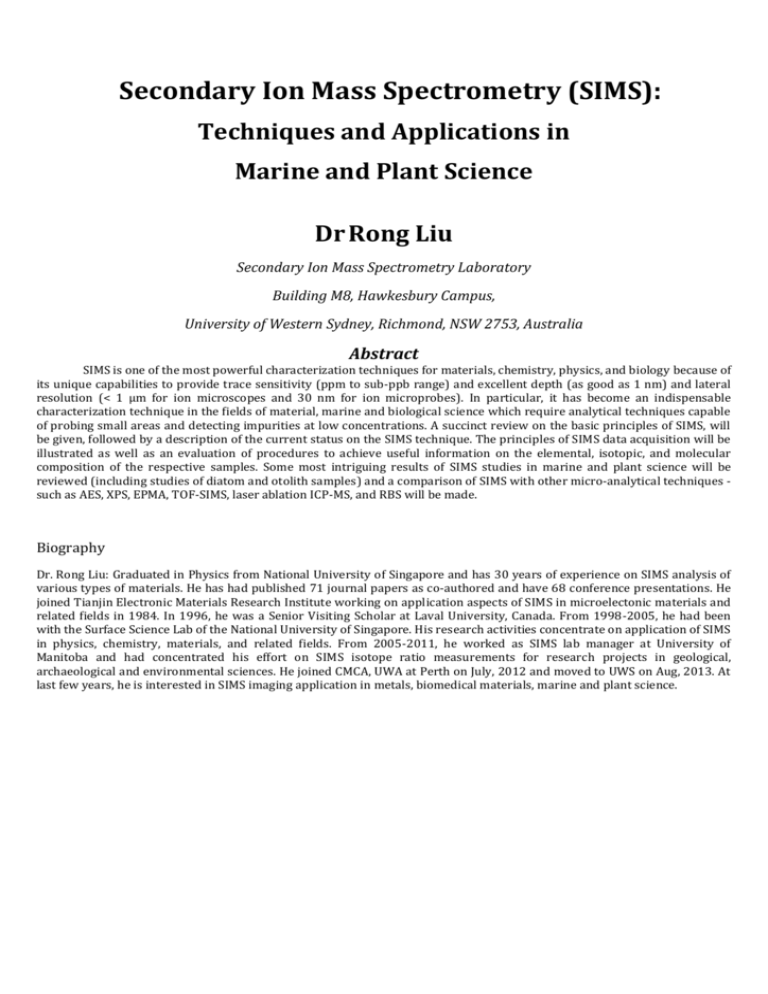SIMS_Flier-uws_2015 - The Sydney Institute of Marine Science
advertisement

Secondary Ion Mass Spectrometry (SIMS): Techniques and Applications in Marine and Plant Science Dr Rong Liu Secondary Ion Mass Spectrometry Laboratory Building M8, Hawkesbury Campus, University of Western Sydney, Richmond, NSW 2753, Australia Abstract SIMS is one of the most powerful characterization techniques for materials, chemistry, physics, and biology because of its unique capabilities to provide trace sensitivity (ppm to sub-ppb range) and excellent depth (as good as 1 nm) and lateral resolution (< 1 µm for ion microscopes and 30 nm for ion microprobes). In particular, it has become an indispensable characterization technique in the fields of material, marine and biological science which require analytical techniques capable of probing small areas and detecting impurities at low concentrations. A succinct review on the basic principles of SIMS, will be given, followed by a description of the current status on the SIMS technique. The principles of SIMS data acquisition will be illustrated as well as an evaluation of procedures to achieve useful information on the elemental, isotopic, and molecular composition of the respective samples. Some most intriguing results of SIMS studies in marine and plant science will be reviewed (including studies of diatom and otolith samples) and a comparison of SIMS with other micro-analytical techniques such as AES, XPS, EPMA, TOF-SIMS, laser ablation ICP-MS, and RBS will be made. Biography Dr. Rong Liu: Graduated in Physics from National University of Singapore and has 30 years of experience on SIMS analysis of various types of materials. He has had published 71 journal papers as co-authored and have 68 conference presentations. He joined Tianjin Electronic Materials Research Institute working on application aspects of SIMS in microelectonic materials and related fields in 1984. In 1996, he was a Senior Visiting Scholar at Laval University, Canada. From 1998-2005, he had been with the Surface Science Lab of the National University of Singapore. His research activities concentrate on application of SIMS in physics, chemistry, materials, and related fields. From 2005-2011, he worked as SIMS lab manager at University of Manitoba and had concentrated his effort on SIMS isotope ratio measurements for research projects in geological, archaeological and environmental sciences. He joined CMCA, UWA at Perth on July, 2012 and moved to UWS on Aug, 2013. At last few years, he is interested in SIMS imaging application in metals, biomedical materials, marine and plant science.











